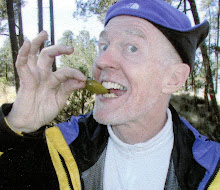



 Absolutely, a trip up the Sani Pass in the Drakensberg Mountains to the high altitude kingdom of Lesotho was one of the big highlights of the trip. A bumpy, and sometimes scary trip up the very basic road switchbacking repeatedly as it threaded its way endlessly up finally topped us out at 10,000 ft where we reached the border post into Lesotho. One of the most desolate, and poorest (that's saying a lot) countries in southern Africa, Lesotho is very atmospheric to say the least. The people are very friendly and hospitable. They seem to spend most of the day wrapped in blankets and sitting in the sun in order to stay warm. We were invited into one of the homes to experience what a Lesotho home is like. We were baked delicious fresh bread, and given homemade beer (which was not so delicious). The houses were stone built with mud chinking to keep out the wind. The roof was thatched, and all the materials for the roof had to be imported from far below because none of those materials grew at high altitude. There were no windows because they would only let out any heat, and the door always faced north in order to let in the sunlight. Although we had to turn around and go back down, the road continued across the intriguing countryside. I thought a motorcycle would be the perfect vehicle for exploration here.
Absolutely, a trip up the Sani Pass in the Drakensberg Mountains to the high altitude kingdom of Lesotho was one of the big highlights of the trip. A bumpy, and sometimes scary trip up the very basic road switchbacking repeatedly as it threaded its way endlessly up finally topped us out at 10,000 ft where we reached the border post into Lesotho. One of the most desolate, and poorest (that's saying a lot) countries in southern Africa, Lesotho is very atmospheric to say the least. The people are very friendly and hospitable. They seem to spend most of the day wrapped in blankets and sitting in the sun in order to stay warm. We were invited into one of the homes to experience what a Lesotho home is like. We were baked delicious fresh bread, and given homemade beer (which was not so delicious). The houses were stone built with mud chinking to keep out the wind. The roof was thatched, and all the materials for the roof had to be imported from far below because none of those materials grew at high altitude. There were no windows because they would only let out any heat, and the door always faced north in order to let in the sunlight. Although we had to turn around and go back down, the road continued across the intriguing countryside. I thought a motorcycle would be the perfect vehicle for exploration here.








































